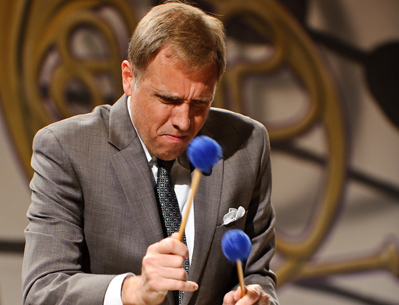Dec 9, 2025 12:28 PM
In Memoriam: Gordon Goodwin, 1954–2025
Gordon Goodwin, an award-winning saxophonist, pianist, bandleader, composer and arranger, died Dec. 8 in Los Angeles.…

Maria Schneider’s new release is a double album titled Data Lords.
(Photo: Briene Lermitte)As one of the top composer-arrangers on New York’s big band jazz scene, Maria Schneider has covered a vast swath of musical territory since her namesake orchestra began recruiting ace instrumentalists and captivating listeners in the early 1990s. Over a series of acclaimed recordings starting with her 1994 breakout album, Evanescence (Enja), Schneider’s writing style has evolved through multiple phases, incorporating the transparent tonal colors of Gil Evans’ large ensemble works, exploring folkloric flamenco rhythms, applying orchestral concepts to the big-band palette and embracing the wide-ranging pastoral beauty of Americana.
Schneider’s recent creative output has taken a more divergent approach—one that’s rooted in her ongoing struggles to deal with the dichotomies of modern living. As she finds herself ping-ponging between the polar extremes of today’s device-obsessed “digital world” and the simpler “natural world” she grew up with in rural Minnesota, she has fought to reclaim a sense of personal space where she can hear herself think and still connect with people in meaningful ways. She misses the deepness of times past.
Schneider also has emerged as an outspoken musicians’ advocate by calling out corporations such Google and YouTube—and other entities she refers to as “data lords”—for policies that she feels have been unfair to composers and creators of various kinds.
When DownBeat checked in with Schneider on the occasion of her Grammy-winning recording The Thompson Fields (ArtistShare) topping the Jazz Album category of the 2016 Readers Poll, she had recently completed a piece commissioned by the Library of Congress Da Capo Fund titled “Data Lords.” Now, a studio recording of that composition and a series of more recent conceptual pieces that grew out of her frustration with big data have been released as Data Lords, an elaborately packaged double album that explores the conflicting relationships between the digital and natural worlds.

Goodwin was one of the most acclaimed, successful and influential jazz musicians of his generation.
Dec 9, 2025 12:28 PM
Gordon Goodwin, an award-winning saxophonist, pianist, bandleader, composer and arranger, died Dec. 8 in Los Angeles.…

Belá Fleck during an interview with Fredrika Whitfield on CNN.
Jan 13, 2026 2:09 PM
The fallout from the renaming of the John F. Kennedy Center for the Performing Arts to include President Donald…

Flea has returned to his first instrument — the trumpet — and assembled a dream band of jazz musicians to record a new album.
Dec 2, 2025 2:01 AM
After a nearly five-decade career as one of his generation’s defining rock bassists, Flea has returned to his first…

Dec 11, 2025 11:00 AM
DownBeat presents a complete list of the 4-, 4½- and 5-star albums from 2025 in one convenient package. It’s a great…

Vibraphonist Chuck Redd found himself in the midst of a political firestorm after canceling his gig Dec. 24 at the newly renamed Trump Kennedy Center.
Jan 6, 2026 2:32 AM
The Board of Trustees at Washington, D.C.’s Kennedy Center for the Performing Arts voted on Dec. 18 to rename the…